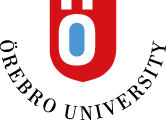6.2 Digitalization: Digital Tools and Organizational Transformation
Keywords:
Digitalization, Decision Making, Sustainability, Management Control, Organizational Change and Transformation, RoutinesAbstract
Digital technologies/tools (e.g. algorithms, machine learning, business intelligence and "robots") plays a vital role in improving the everyday life for individuals, organizations and society. However, in many aspects, we still lack academic studies about these "intelligent" technologies, with all its applications and consequences for work and business. The focus in this track is on how new organizational solutions (e.g. different micro-foundations; roles, routines, rules/norms) can be inspired and supported by different digital tools. All this in a new augmented reality. A special focus will be given to organizational transformation and sustainability issues related to the ongoing digitalization.
References
Bailey, D.E. & Barley, S.R., 2020, ”Beyond design and use: How scholars should study intelligent technologies”, Information and Organization, 30, 2.
Baghizadeh, Z., et al, 2020, ”Review and Critique of the information systems development project failure literature: An argument for exploring information systems development project distress”, Journal of Information Technology, 2020, 35, 2, 123-142.
Felin, T., et al., 2012, ”Microfoundations for Routines and Capabilities: Individuals, Processes and Structure”, Journal of Management Studies, 49, 8, pp 1351-1374.
Kellog, K. C., et al., 2020, ”Algorithms At Work: The New Contested Terrain of Control”, Academy of Management Annals, Vol 14, 1, pp 366-410.
Leonardi, P.M. (2013). Theoretical foundations for the study of sociomateriality. Information and Organization, Vol. 23, No. 2, pp. 59-76.
Stouten, J., et al, 2018, ”Successful Organizational Change: Integrating The Management Practice and Scholarly”, Academy of Management Annals, 12, 2, 752-788.
Baghizadeh, Z., et al, 2020, ”Review and Critique of the information systems development project failure literature: An argument for exploring information systems development project distress”, Journal of Information Technology, 2020, 35, 2, 123-142.
Felin, T., et al., 2012, ”Microfoundations for Routines and Capabilities: Individuals, Processes and Structure”, Journal of Management Studies, 49, 8, pp 1351-1374.
Kellog, K. C., et al., 2020, ”Algorithms At Work: The New Contested Terrain of Control”, Academy of Management Annals, Vol 14, 1, pp 366-410.
Leonardi, P.M. (2013). Theoretical foundations for the study of sociomateriality. Information and Organization, Vol. 23, No. 2, pp. 59-76.
Stouten, J., et al, 2018, ”Successful Organizational Change: Integrating The Management Practice and Scholarly”, Academy of Management Annals, 12, 2, 752-788.
Downloads
Published
2020-11-01
Issue
Section
Organization Studies



